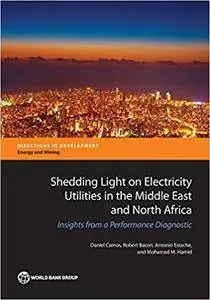Shedding Light on Electricity Utilities in the Middle East and North Africa: Insights from a Performance Diagnostic (Directions in Development) by Daniel Camos
English | Dec. 4, 2017 | ISBN: 1464811822 | 259 Pages | PDF | 2 MB
English | Dec. 4, 2017 | ISBN: 1464811822 | 259 Pages | PDF | 2 MB
The electricity sector in the Middle East and North Africa (MENA) is in the grip of an apparent paradox. The region holds the world’s largest oil and gas reserves and has been able to universalize access to electricity in most economies, but it may not be able to make the investments required to meet the future power needs of its fast-growing populations. The annual investments to keep pace with the demand for electricity have been estimated at about 3 percent of the region’s projected GDP. In most of the region’s economies, however, financial constraints limit the ability to make those investments. The power sector needs to find its own financing sources―and quickly.
Shedding Light on Electricity Utilities in the Middle East and North Africa provides quantitative evidence on how better utility management; sustainable pricing; and selective, context-specific reforms would free enough resources to make the needed investments and lower the operating costs of the sector. The solution involves cutting costs and raising revenues through well-targeted and well-identified improvements. These
improvements would generate more financing than the sector’s investment needs. The report provides detailed evidence of the size of the potential gain in each of the 14 MENA economies covered.
The analysis is based on the MENA Electricity Database, a new dataset covering 67 electricity utilities, as well as a sample of utilities in comparable economies from other regions. The authors hope that their benchmarking efforts will provide a regional- and utility-level frame of reference for sector performance in the region.
The book will be of interest to managers of electricity utilities, regulators, policy makers, and other stakeholders concerned with the performance of utilities in the region.



